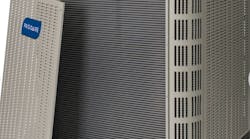A few months ago, I was fortunate to contribute to HARDI's magazine and share my insights into appropriately sizing storage positions and equipment. Not the most exciting topic to your average Joe, but HARDI readers are far from average, and most realize that right-sizing the storage equipment and slots in any distributor's warehouse will allow the facility to support more product sales or allow for a smaller operating footprint, either of which improves the bottom line of any distribution operation. And so it is a topic of interest to anyone with a distribution operation.
The optimization of storage utilization, however, only really encompasses a portion of the opportunity you can mine within a distribution operation's storage and pick areas. While optimally sized pick and storage locations are important and will translate into increased sales support capability per square foot of warehouse, once you've accomplished that optimal storage slot sizing, the next level of cost-reduction can be more easily attacked — where you should position those locations within an operation or a pick line to further reduce variable operating costs — and that optimization directly affects operational productivity and order cycle time.
By “slotting” a pick line or storage area, I mean organizing product to be picked so that there is a reduction of effort to assemble a customer's order, hopefully in a substantial manner, when compared to the effort required to assemble that customer's order from product stored randomly. There are innumerable paradigms by which you can slot a pick line, and the best approach depends upon several factors, including your customers' order tendencies; your products' ordering affinities (what most often gets ordered with what); size, weight, fragility and other product characteristics; any order-batching capabilities you may have; and head and shoulders above most item profile characteristics, the velocity ranking of each item picked — from the hottest, fastest movers to the slowest, most infrequently ordered items. Look at velocity rankings first when seeking to understand the optimal slotting paradigm for your operation. It isn't the last place to look, but it is the best place to start.
Every operation has its fast- and slow-moving items, and they can all be ranked from No. 1 to the last item — A, B and C velocity movers. Though there are many approaches to stratifying or ranking the items picked in an operation, for starters, let us assume the top five percent of the items, when ranked in unit volume order, are A items, the next 15 percent of the items are B items, and the remaining 80 percent are C items. So for a field of 1,000 items, the top 50 items are A movers, the next 150 items would be B movers, and the remaining 800 itemsare C movers. Because these items are ranked by velocity, however, when the unit volume sales for the items are tallied, the A and B movers combined (the top 20 percent) usually represent in the neighborhood of 80 percent of the unit volume — hence the “80/20 rule” that is so often bandied about in discussions of item volume and velocity rankings. Now, an operation can have a steeper curve than 80/20. For example, 90/10 operations have item populations where the top 10 percent of the items represent 90 percent of the unit volume movement. Likewise, there are shallower curves where 70 percent of the movement may be represented by the top 30 per-cent of the items. The most important fact to take away from the velocity ranking is, however, really at the other end of the spectrum — the bottom half of the item population often represents less than five percent of the unit volume — and those are not items you want to constantly have to walk or drive past on your way to picking your more popular items. That is the core of velocity slotting.
Simply put, velocity-slotting approaches to organizing your pick area collect all the faster-moving items closer together, and closer to inbound and outbound points of your facility or pick area. This will invariably decrease the walk distance for discrete order-picking, especially if your orders do not have many or any C items on them. Walking is, on average, 50 percent of the time involved in picking discrete orders within a pick operation; so any decrease in walking distance will result in a corresponding productivity increase and order cycle time decrease. There are a few words of caution when velocity-slotting a pick line or storage area (if your ordered items are picked directly from storage).
Page 2 of 2
First, be wary of the “left field line.” Some operations have order profiles that always have a slow-moving line item or two on every order. If slower-moving product is velocity-slotted so that it is relegated to a back corner or “left field” within a facility, and each order has one order line requiring travel out to “left field” much of the velocity-slotting pick economies are lost, since every order will still require a large amount of walk time, even if it is only to retrieve one item. Guard against this decrease in productivity by evaluating your order profiles. If only a small segment of your orders have a slow-moving item on them, batch the slow-moving orders together and the fast-moving orders together to diminish the number of times you travel to the slow-moving area. If all orders have at least one slow- moving item on them, perhaps picking all the slow-moving items together for a group of orders and merging those items with the faster-moving items subsequent to picking will protect your labor savings while allowing for servicing all items in a timely fashion.
The second caution is to avoid being too effective in your velocity-slotting efforts. Evaluate how many line item picks your employees will make in your fast-moving area in the course of an average day after you have velocity-slotted your pick area. Has the velocity-slotting been so effective that too many employees must pick at the same time in an area too small to support that level of activity? The appropriate-size area depends upon the size of the product being serviced, the size of the orders being picked, the carriers and vehicles the orders are being picked to and with, and other factors unique to each operation, but the bottom line is that too much of a good thing in velocity slotting can be bad — very bad. Overcongested pick lines can eliminate all the advantages gained through reduced walk distances, and worse, they can gridlock a pick area, limiting throughput and productivity.
There are other slotting approaches to increase productivity significantly through reduced pick travel and item handling. If you have items that one or a narrow group of customers orders, you can pick them more productively by collocating those items in your pick area. If you have particular sets or groups of items that customers almost always order together (frequently described as order “affinity”), such as a bolt and corresponding nut, slotting those items next to each other will reduce the average amount of travel to fulfill orders requiring those particular items.
You should not pursue travel reduction, important as it is to productivity increases, over other reduced handling slotting approaches as well. For example, when faced with picking larger items or cases to a pallet, slot product so that you pick larger, more stable products first, followed by smaller units and boxes. This contributes to building a more stable pallet as the employee picks the product, rather than rehandling it during the pick process. Likewise, the best placement for heavier, sturdier product is at the beginning of a pick line with more fragile lighter product at the end. That case of light bulbs really does not want to sit underneath a case of nails. The goal of these slotting approaches is to avoid restacking or rehandling picked product by virtue of the sequence in which someone picked the product.
The best slotting solution is usually a combination of the above approaches, used in measures that best fit the operation it must support. Properly executing a slotting analysis, examining all the approaches outlined above, will not only increase the productivity in your pick operation (by as much as 33 percent) but will decrease the cycle time with which an order can be assembled for your customers. Not too many operational modifications can both decrease operating costs and increase customer service levels, making a properly focused pick-slotting effort one of the smartest things you can do for one of the most labor-intense areas in your operation.
Bryan Jensen has 25 years of experience in retail and wholesale distribution, transportation and logistics, and is a vice president and principal with St. Onge Co. in York, Pa., assisting clients in “right sizing” and slotting their storage and pick systems. St. Onge Co. is a materials handling and manufacturing consulting firm specializing in the planning, engineering and implementation of advanced materials handling, information and control systems supporting logistics, manufacturing and distribution since 1983 (www.stonge.com). Contact Bryan at 717/840-8181 or by e-mail at [email protected].
© 2009 Bryan Jensen





